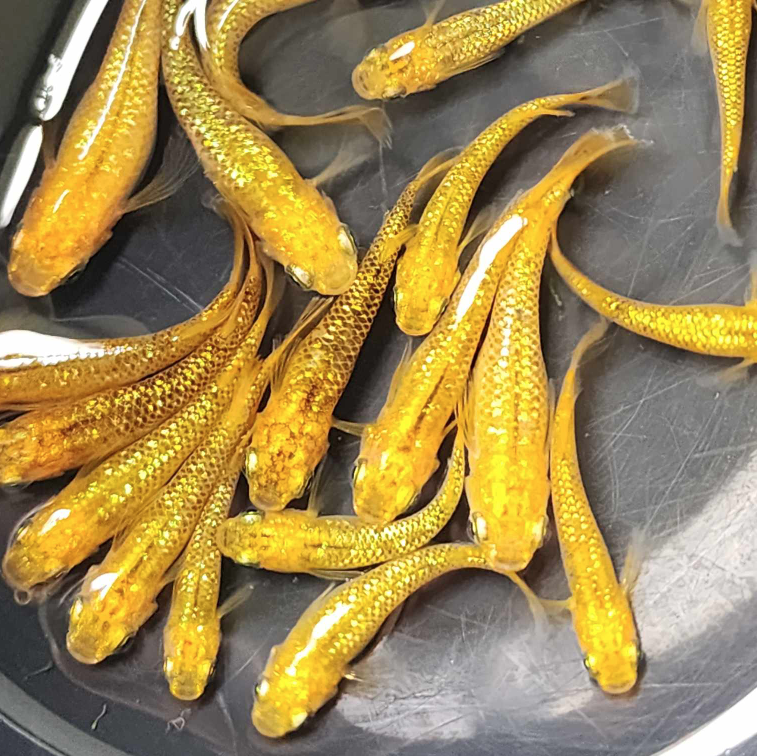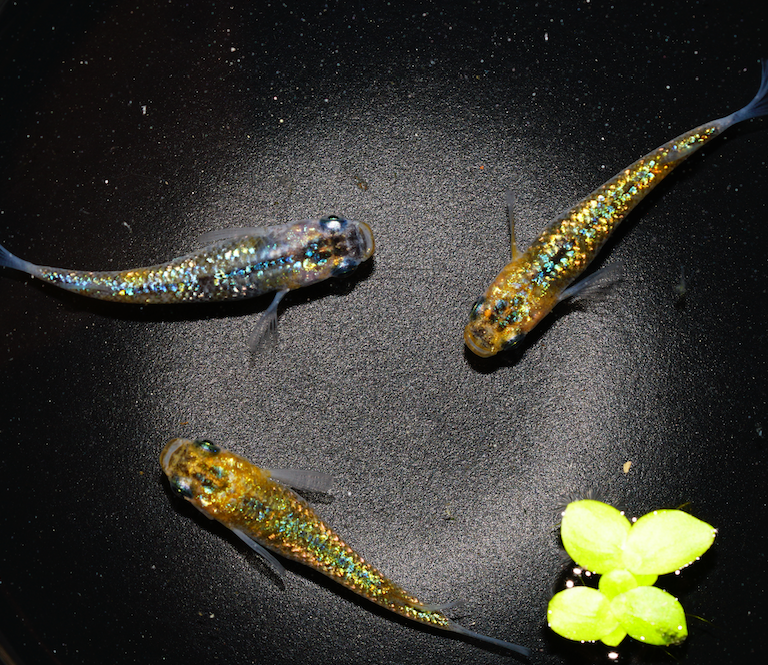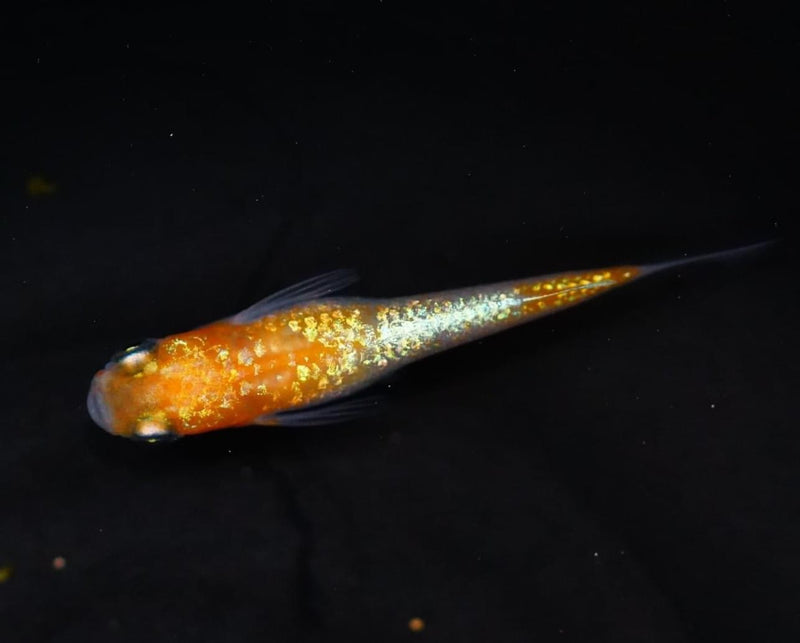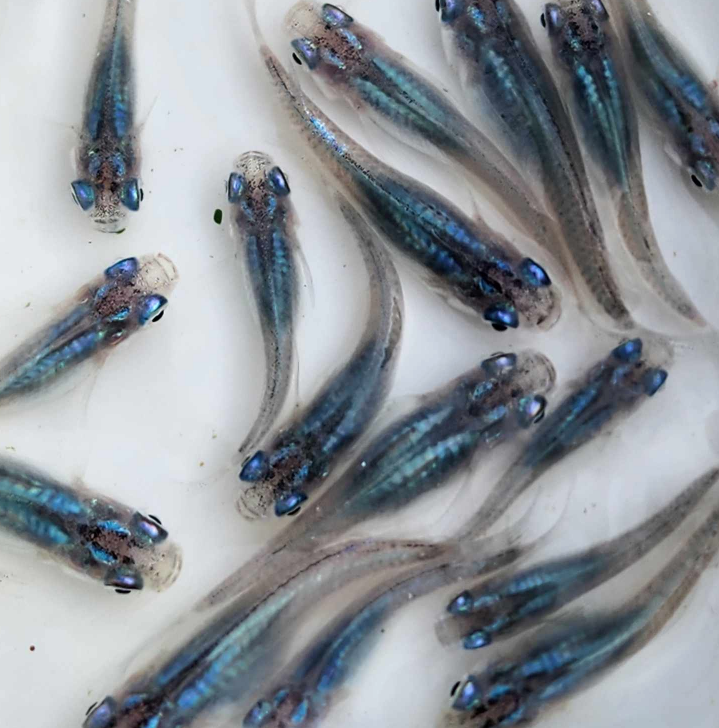Oryzias latipes has many common names, including medaka, the japanese rice fish, or simply the rice fish. This fish is native to Japan, and is, for all intents and purposes, the equivalent of the guppy in Japan. There are many different color forms and strains of these fish, and they are extensively worked with in Japan. There are different variants which are developed for their different colors which they can express, but also for their body shapes, which are distinguished by breeders as “top down viewing” and “side viewing”. The ones made for top down viewing are typically very densely colored along their back, but less so or sometimes even translucent on their sides. The side viewing ones tend to have more color on their flanks, but often their backs are not completely covered by color, and they can appear to be more splotchy when viewed from above. The former are more popular in Japan, as many people have porcelain bowls with a plant and some ricefish. This strain is the platinum ricefish, and while it is bred for top down viewing, it has a gorgeous lamé iridescence on its scales when viewed from the side as well. In Japanese the strain is known as “miyuki” which roughly translates to “beautiful snow” and it is very apparent when you view these fish, since they are pale white and glittery, with the only dark spot on them being the black pupils. The iridescent scales sometimes appear blue, and sometimes are a more metallic silver, flashing as the fish wiggles, and is extremely bright for a tiny fish that caps out at 1½ inch.
These fish are extremely hardy, famous for being able to survive even when their pond’s surface is frozen over. These fish will do well in almost any environment, but of course you will want to keep their aquarium clean, and well filtered. It is an option to keep these outside in many places, but in that case you must make sure that they are not fed going into the cold months, as they will spend most of the cold times in a state of torpor, not eating and just able to react to danger stimuli. It is also helpful to cover and insulate the outdoor container that they are overwintering in, and if you have space it is always better to bring them somewhere warmer like a garage or room.





